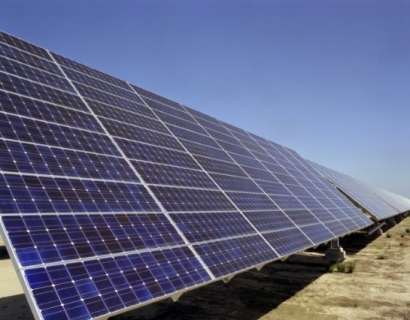
What seems to get lost is the environmental benefits of solar to our community and society. In Mendota, Illinois, neighbors are fighting a solar project that LaSalle County will vote on. Signs by the opponents read "eyesore solar farms" and "Will depreciate property values in this area!"
In Culpeper County, Virginia, the county planning commission recommended denial of a 1,000-acre solar farm as neighbors complained about property values and their view sheds being disturbed.
In Pueblo, Colorado, a proposed 750-acre solar farm faced opposition from residents who banded together to sign a petition against the project.
A 25-acre solar project on a golf course in Pittsfield, Massachusetts, raised opposition in part due to the construction vehicles that would be required to build the project, along with concerns about tree cutting.
These, and numerous other similar projects, have one thing in common. They are often well thought out but have not garnered the positive interest of the public. The opponents organize quickly, gain traction, use social media and spread misinformation. Without countering these tactics, solar developers may ultimately gain approval of their projects, however, often at a cost of delays and postponements, or even losing control of the land for the project.
Opponents often say "we support solar, just not here" but rarely offer viable alternatives. Our firm has outlined just a few of many tactics that have proven very effective at educating residents on solar projects, countering misinformation, generating public support, and raising positive awareness of solar. The cost of these campaigns is far less than the cost of delays or even projects being canceled, and a well-organized campaign helps to build a positive brand for the developer for the current and future projects they may have. Some of these tactics include:
Hold Community Open Houses
To explain solar energy to skeptical residents will take a public education campaign, and no better place to start this than with a community open house. An open house allows the development team to showcase the process of solar energy, showcase solar panels, and alleviate concerns by dispelling rumors and half truths that may have circulated. It is a great way for one-on-one communication with residents and those who live nearby who may feel they are more impacted.
Leveraging Social Media
Creating accounts with the intent of granting the community quick access to facts, graphics and answers to frequently asked questions is an efficient way to identify and engage with supporters. Additionally, social media is an easy way to keep stakeholders informed. Launching social media in a timely manner allows you the chance to control the promoted message rather than being forced to react when opposition arises. Social media is no longer just about Facebook either. Twitter, LinkedIn, and Instagram are often used now to promote projects.
A Project Website
Create a website just for the project to explain the process of solar energy, disseminate facts and dispel rumors. A website is also a great way to have residents ask questions, submit letters of support, and communicate with the energy development team of experts.
A Door-to-Door Effort
For those who do not have access to the internet, door-to-door campaigning will be the most effective method of relaying project information, especially those who live near the proposed solar site, and may have stronger feelings on the project. Neighbor to neighbor communication is vital.
Utilizing Direct Mail
While social media campaigns will still reach an important audience, it is imperative to account for those that will benefit more from physical mailing. Direct mailing is cost effective when targeted to specific demographics- i.e. invitations to public hearings or open houses to supporters once they have been identified. Sending a direct mailer that corrects myths and clarifies misconceptions could sway those who have not taken a stance in your favor. "Snail mail" may be old, but it can be very useful.
All land use is local. Building support from the ground up is often a good way to have these projects approved in a timely and more cost-efficient manner.
Al Maiorino started Public Strategy Group, Inc. in 1995. His firm has developed and managed multiple corporate public affairs campaigns in a variety of industries such as gaming, cable television, retail development, auto racing, energy and residential projects. Additionally, his firm has worked on projects in twenty-six states and three countries.

